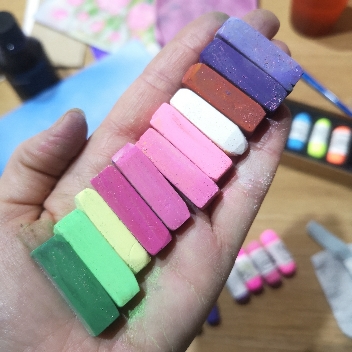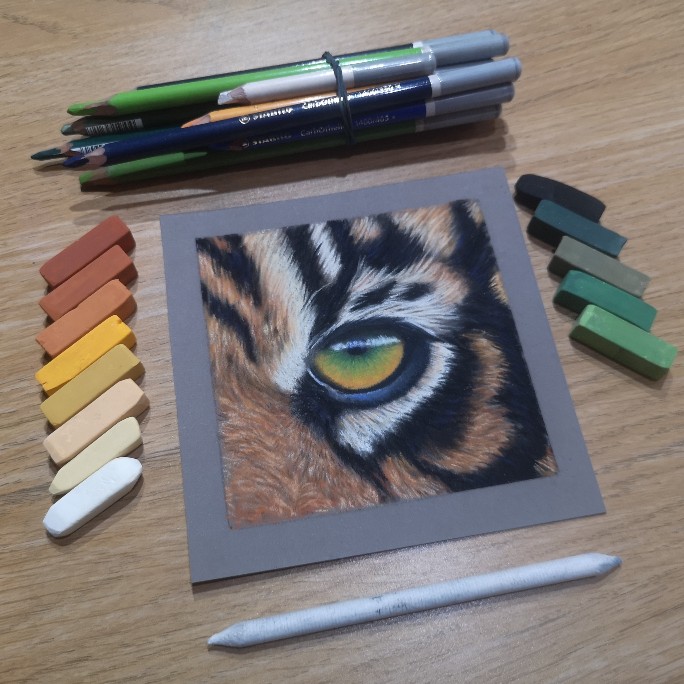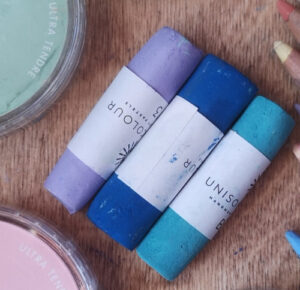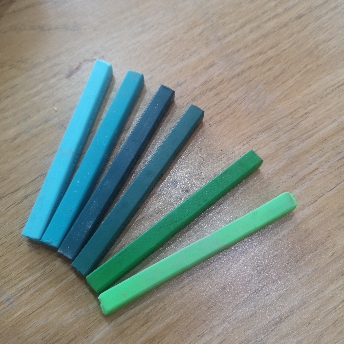How To Clean Pastelmat
There’s a popular myth that you have to start soft pastel with the best soft pastels money can buy.
(I use the best pastels money can buy because I’m creating commissions for my lovely client’s beloved family and pets. They last a lifetime with lightfast pigment and rich intense colour.)
BUT I do not agree that a beginner should start with these. Here’s my take, but what do you think?
- Student sticks are harder than professional sticks and easier to use.
- They are easier to control the pressure.
- They are better priced for small and medium budgets (don’t let money be a barrier to starting)
AND Elephant in the room:
You don’t want to fork out a fortune if you don’t know that you’ll enjoy it!! (but I’m sure you will!!)
However…
There’s a drawback with student sets
- They lack colour choice.
- They lack very dark colours.
- They lack very light colours
So what do you do?
Buy the biggest beginner set you can. Usually 72 or 64 sticks in a set
THEN:
Supplement your set with quality darks and lights from professional ranges like Unison, Terry Ludwig, Schmincke or mid range brands like Rembrandt or Jackson’s Art Hand Made.
BUT best not to start with Sennelier as they can be super soft and can even crumble.
Find out about Unison Soft Pastels here. Unison are a UK based professional brand. Professional pastels are softer because they have more pure pigment.
Get Started with Soft Pastel for Beginners
There are so many brands it can be VERY CONFUSING and even put you off! To SAVE you hours of research and to save you a TON of money. Here’s what I recommend to all who are new to soft pastel.
Pastel Paper: Pastelmat or Wet & Dry Paper 1000-1200 GRIT from the Hardware Store. Mind your fingers though. (More info in my free tutorial about using sand paper)
Soft Pastel Sticks: Jaxell 72 set, Inscribe 64 set or Koh-I-Noor 72 set. Get the biggest set you can afford. Really, the biggest you can get, 72 or 64 and you can thank me later 🙂
Pastel Pencils: Carbothello or Faber Castell 60 set or the biggest set you can get. The biggest set or buy singles as they are oftern cheaper.
Tools: Tortillon blenders and rubber blenders.
Rubber: Kneadable Medium Putty Rubber.
Damp Cloth for your hands.
A board and/or an easel (it’s easier to work up right so you don’t smudge it)

What Are Soft Pastels?
Soft Pastel is made from pure pigment with a little binder to form it into a stick. The binder to pigment ratio determines the quality in terms of light-fastness and softness and also price.
The Difference Between Soft Pastel, Oil Pastel and Chalk
Before we get into soft pastel there is a common confusion / myth I want to clear up for you. soft pastel, oil pastel and chalk are not the same. Soft pastel is pure, rich, intense pigment (powder) and binder to hold the pigment together, chalk is lime coloured with dye (very weak compared to pigment) and oil pastels are like children’s crayons made from none-drying oil and wax.
Types of Soft Pastel
Available in square profile, round profile, soft, hard, pans and pencils, soft pastel is truly versatile and a lot of fun, with no drying time! With all these options it can cause you some confusion. Essentially the softer the pastel the more pigment it has and the more lightfast and vibrant the colour is on the pastel paper. Let me explain the types:
Soft Pastel Sticks
These pastels can be round or square in profile, it just depends on how they are made; hand rolled or machine made. They are generally fairly thick due to their softness because they contain less binder than harder sticks. The term soft pastel covers pastels from student brands all the way through to professional brands. Most student brands can be as hard as hard pastel sticks, just a little thicker. this is why it’s confusing. Many manufacturers supply half stick sizes, about an inch long (2.5cm) and full stick sizes about 2 inches long (5cm) It’s a good idea to get the half stick sets as a beginner because you’ll get a greater colour choice in your set.
Hard Pastel Sticks
Hard pastel sticks are useful on paper with less tooth and they can be used to draw with. They are generally long, thin and square in profile. Hard pastels have more binder than soft pastels. It is the binder in hard pastels that makes them harder. They are also good for fine lines such as whiskers and hairs. Top brands include Conte A Paris, Faber Castell Polychromos Soft Pastels, Caran D’Ache Sticks and Nupastel. There aren’t any mid and student range brands that are classed as hard sticks.
Beginners Soft Pastels
Student grade soft pastels are a mix of all the above! They are square but a little fatter, they are not too hard and not too soft. I recommend student range soft pastels such as Jaxell, Inscribe and Koh-I-Noor for beginners because they are harder than professional pastels and therefore easier to control. One of the techniques I teach my students is to control the pressure and it’s a lot easier to do that with harder sticks.
This young lady was my first pastel painting with a set of 6 pastel pencils I got as a Christmas gift in 2015. You too can go from simple drawings to beautiful realism just with practice, because that’s exactly what I did and I can help you get there.
If you’ve got your supplies (or you want to stop buying supplies and start learning, take a look at my beginners course: Soft Pastel Mastery For Beginners






